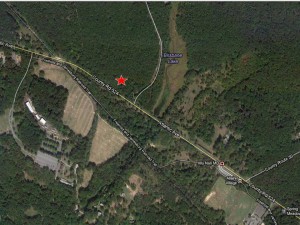Observations of Rare Species Wanted!
NATURE WATCHING ISN’T JUST FUN, IT CAN BE USEFUL TOO
By Michael Davenport, Marine Species & GIS Programs Manager
Like many birdwatchers, although I still enjoy seeing the neighborhood cardinal in my yard, it’s the sightings of rarely encountered species, especially those classified as endangered, threatened, or special concern, which really keep my eyes scanning around during a hike.

Many birdwatchers, or nature enthusiasts of other species groups such as reptiles or butterflies, share their encounters with rare species on websites or bulletin boards. In addition, several organizations, such as the Cornell Lab of Ornithology or NJ Audubon, recruit “citizen scientists” who collect species observation data and submit that data electronically via websites such as eBird. That data is important for those organizations’ scientific research and assists scientists in analyzing population trends over years. However, more often than not, it never finds its way to New Jersey’s state biologists nor the state regulators whose task it is to protect rare species habitat in the state.
The New Jersey Endangered and Nongame Species Program (ENSP) collects data for, not just rare birds, but all of the state’s endangered, threatened, and special concern species. A Rare Wildlife Sighting Report Form is available on ENSP’s website for download as well as instructions for completing the form. A complete list of all of the species tracked by the state can be downloaded here.

Rare species data within the state’s database plays a critical role in wildlife and habitat conservation. It is the foundation of the NJ DEP’s Landscape Project, a GIS product that maps critical areas for imperiled species based upon species locations and land-use classifications. The resulting maps allow state, county, municipal, and private agencies to identify important wildlife habitats and protect them in a variety of ways. This information is used to regulate land-use within the state and assists in preserving endangered and threatened species habitat remaining in New Jersey.
Reporting your rare wildlife observation is easy. Simply complete the form, attach a map of where the animal was observed, as well as any photographs taken, and then mail or e-mail the form and map to ENSP at the address provided on the form. For more details about the state’s rare species mapping, please visit our webpage.
Discover more from Conserve Wildlife Foundation of NJ
Subscribe to get the latest posts sent to your email.